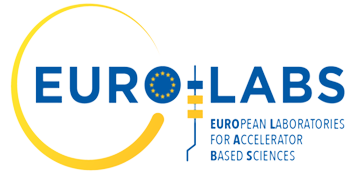The MeanField4Exp service has been established within the collaboration between the IPHC Strasbourg and IFJ PAN Krakow. It offers virtual access to the results based on the realistic phenomenological nuclear mean-field theory calculations.
Themes
- Single nucleon energies as functions of user-chosen multipole deformation parameters.
- Total nuclear energy shape dependence for isotopes and isotones with user chosen deformations.
- Potential energy maps: shape coexistence and evolution with Z and N numbers.
- Nuclear shape evolution with spin deduced from nuclear macroscopic models.
- Services under construction include modelling for deformed nuclei of, among others: nuclear density functions, electric and magnetic moments, reduced transition probabilities, rotational band energies, moments of inertia, quasi-particle excitations, K-isomers, yrast traps, giant dipole resonance properties with increasing spin and temperatures, high temperature limits, and selection of other mechanisms.
Mean Field Hamiltonian: Parametric Stability and Universality
The underlying theory Hamiltonians were optimised to the newest relevant experimental data using the modern optimisation methods involving Inverse Problem Theory of Applied Mathematics. Such an approach allows to remove parametric correlations known to destroy viability of predictive power when addressing the nuclear zones further and further away from the fitting zones [1,2]. Our formulation uses the so-called universal parametrisation approach according to which the single nucleon energies are described with the common set of 6 central potential and 6 spin-orbit potential parameters, all the 12 common for all the nuclei in the nuclear mass table (wherefrom: `universal’). We operate typically with quadrupole, octupole and hexadecapole shape parametrisation in terms of the standard spherical harmonics. Examples of testing the quality of predictions of the nuclear equilibrium deformations have been performed and published [3].
Further features
The service provides the pre-calculated 2D projections of the Macroscopic-Microscopic potential energy surfaces, and includes the shape evolution with spin according to macroscopic energy in the form of Myers and Swiatecki [4] or Lublin-Strasbourg Drop (LSD) [5,6], thus allowing to address the Jacobi and Poincare shape transitions [7]. As particular applications, the fission and tri-partition decay channels can be addressed. More options will be available soon.
References:
[2] I. Dedes and J. Dudek, Physical Review C 99, 054310 (2019).
[4] W. D. Myers and W. J. Swiatecki, Nucl. Phys. 81, 1 (1966).
[5] K. Pomorski and J. Dudek, Phys. Rev. C 67, 044316 (2003).
[6] J. Dudek, K. Pomorski, N. Schunck and N. Dubray, Eur. Phys. J. A 20, 15 (2004).
[7] A.Maj, K.Mazurek, J.Dudek, M.Kmiecik, D.Rouvel, Int.J.Mod.Phys. E19, 532 (2010).





